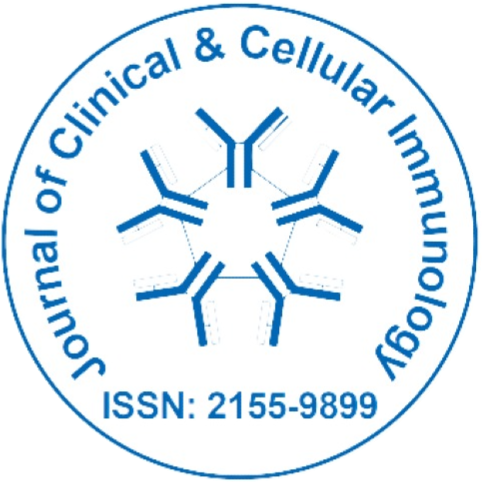
Journal of Clinical and Cellular Immunology
Open Access
ISSN: 2155-9899

ISSN: 2155-9899
Opinion Article - (2025)Volume 16, Issue 1
Coagulation, also known as blood clotting, is a complex physiological process that prevents excessive bleeding when a blood vessel is injured. It is a critical component of hemostasis, the mechanism that stops bleeding and maintains blood in a fluid state within the circulatory system. Coagulation involves a tightly regulated force of events that lead to the transformation of blood from a liquid into a gel-like clot, ultimately sealing the site of injury and initiating tissue repair.
The coagulation process can be divided into three main phases: the vascular phase, the platelet phase, and the coagulation force. When a blood vessel is damaged, the vascular phase begins immediately with vasoconstriction, where the vessel narrows to reduce blood flow. Next, in the platelet phase, platelets adhere to the exposed subendothelial tissue and become activated. They release chemical signals that attract more platelets to the site, forming a temporary platelet plug.
Factors of coagulation
The coagulation flow is the most complex part of the process and involves a series of enzymatic reactions in which inactive clotting factors are converted into their active forms. This flow has two pathways: the intrinsic and extrinsic pathways, which converge into a final common pathway. The extrinsic pathway is triggered by external trauma that causes blood to escape from the vessel, primarily involving tissue factor (factor III) and factor VII. Thrombin then converts fibrinogen (factor I) into fibrin, which forms the structural framework of the clot by creating a mesh that traps blood cells.
After the clot has served its purpose, the body initiates fibrinolysis, a process that breaks down the clot to restore normal blood flow. This involves the activation of plasminogen into plasmin, an enzyme that digests fibrin and dissolves the clot. The balance between coagulation and fibrinolysis is essential to avoid excessive bleeding or unwanted clot formation, which can lead to thrombosis.
Disorders of coagulation can be broadly categorized into bleeding disorders and thrombotic disorders. Bleeding disorders, such as hemophilia A and B or von Willebrand disease, result from deficiencies or dysfunctions of specific clotting factors. These conditions often lead to prolonged bleeding, spontaneous hemorrhages, and complications after surgery or injury. Diagnosis typically involves coagulation tests like Prothrombin Time (PT), Activated Partial Thromboplastin Time (APTT), and factor assays.
Coagulation is an essential physiological process that protects the body from bleeding while maintaining vascular integrity. It involves a delicate interplay of cellular and biochemical components, and its dysregulation can lead to life-threatening conditions. Ongoing study continues to uncover new insights into coagulation mechanisms, offering potential for improved diagnostic tools and targeted therapies in a wide range of medical conditions. The role of coagulation in inflammation, cancer progression, and cardiovascular diseases has become a focus of intense study. Moreover, the COVID-19 pandemic highlighted the importance of understanding coagulation, as many patients experienced severe thrombotic complications due to an abnormal immune response affecting clotting pathways.
Citation: Hall D (2025). Integrative Proteomics in Coagulation and Prognostic Applications in Clinical Hematology. J Clin Cell Immunol. 16:750
Received: 24-Feb-2025, Manuscript No. JCCI-25-37333; Editor assigned: 26-Feb-2025, Pre QC No. JCCI-25-37333; Reviewed: 12-Mar-2025, QC No. JCCI-25-37333; Revised: 19-Mar-2025, Manuscript No. JCCI-25-37333; Published: 26-Mar-2025 , DOI: 10.35248/2155-9899.25.16.750
Copyright: © 2025 Hall D. This is an open-access article distributed under the terms of the Creative Commons Attribution License, which permits unrestricted use, distribution and reproduction in any medium, provided the original author and source are credited